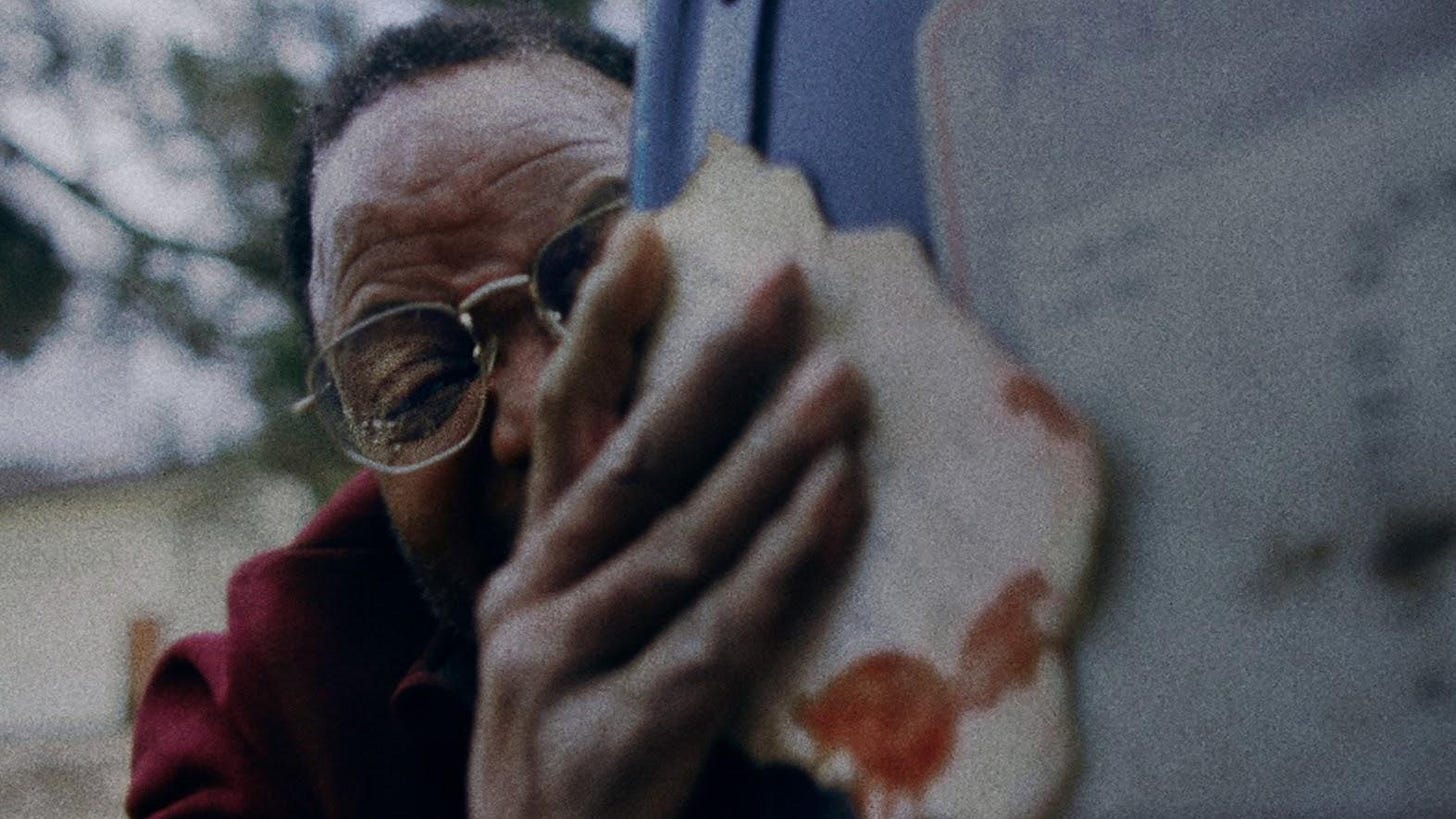‘Dead Mail’ delivers lo-fi Coen Brothers vibes
‘80s-set indie is a twisty Midwestern horror noir
I was transfixed the first time I watched “Blood Simple” on late-night television. What Joel and Ethan Coen lacked in budget in their debut feature, they more than made up for in style and nerve, and there was a sense that anything could happen to any character on screen that kept me giddily off-balance.
I had the same feelings watching “Dead Mail,” the low-budget ‘80s-set horror neo-noir from writer-directors Kyle McConaghy and Joe DeBoer. Audacious in its narrative structure, thrilling in its execution of shocks, and unexpectedly poignant in its rich characterizations, it’s a gangbusters debut.
“Dead Mail” sinks its hooks in from the opening scene, in which a bound and bloody man, Josh (Sterling Macer, Jr.) bursts out of a house. Before his captor, Trent (John Fleck), is able to subdue him, the victim is able to stuff a half-finished note into a nearby post office box.
Cut to the local post office in rural Peoria, Illinois, where postal inspector Jasper (Tomas Boykin) has a reputation as something of a master sleuth when it comes to tracking down the source of so-called “dead letters.” Josh’s blood-stained note crosses his desk, and an intrigued Jasper starts using his powers of deduction and observation to figure out where it came from.
So we think we understand the contours of “Dead Mail,” that it will become a battle of wits between the dogged Jasper and the desperate Trent, with Josh’s life hanging in the balance. But McConaghy and DeBoer very effectively blow up that premise up about 20 minutes into the movie.
Instead, much of “Dead Mail” flashes back to how Josh ended up locked in Trent’s basement. The two men were friends, it turns out. Josh is an engineer trying to perfect a new synthesizer (the ominous synth score in “Dead Mail” is more than just ornamental), and Trent was his enthusiastic partner and financial backer. Knowing that this friendship is about to go very, very sour gives “Dead Mail” an extra layer of suspense.
McConaghy and DeBoer use the bleak, bland vistas of the Reagan-era Midwest to terrific effect, from the institutional tile floors of the post office to the massive car that Trent drives. While the movie was shot on digital, it has the grainy texture of 16mm film. Every character, large or small, pops off the screen in some way, especially the motley crew of postal workers who form a supportive little community around Jasper.
And as Trent, John Fleck is one of the best movie villains I’ve seen in years. Sporting the elegant precision of a Vincent Price, Trent is hypnotic to watch as he goes about his dark deeds, his attempts to clean up messes only leading to bigger messes. But Fleck also makes Trent a pathetic if not sympathetic figure, driven by deep loneliness that curdles into murderous rage when betrayed.
(Update: In my original review of “Dead Mail” in February, I noted that the coda of the film seemed to use AI to create images of the characters in present day. I’m told that AI has been removed for the streaming release on Shudder. I’m grateful for that. I know AI can be tempting to artists on a shoestring budget, but this was a classic case of how it blemishes an otherwise terrific piece of filmmaking.)
“Dead Mail” is now streaming on Shudder.




I didn’t know about the AI thing. Interesting. Idk how I’d feel about it.